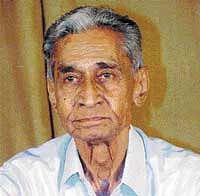
The award is extremely significant for the simple reason that cinema, which Phalke pioneered in India 97 years ago as a feature film format, cannot exist without cinematography, as motion picture photography is termed, and Murthy is the first winner in this department. Adds Murthy’s illustrious protégé, director-cinematographer Govind Nihalani, whose company Udhav Dreamzone had co-published Basilu Kolu (Ray Of Light), Murthy’s Kannada biography four years ago, “It is also important because Phalke himself was the cinematographer of all his films.”
The Murthy-Nihalani association goes back to 1962, when the latter enrolled in the institute and Murthy was already a legend. Nihalani says, “Any great cinematographer needs space and freedom and that’s what Guru Dutt gave him in the many films they did in their 15-year association. To me, this director-cinematographer team ranks among the best in the world.” Nihalani adds that for Murthy, a scene was never the mere sum of its shots. “He would compose a scene like a composer would with his piece of music — to convey an emotion and evoke another from the audience. He invested deep thought and detail, like Guru’s first glimpse of Meena in a dimly lit room in Sahib Bibi Aur Ghulam.”
Dharmendra, who worked with him in seven films recalls with affection his unique nature, “He would exercise proprietary rights on people with whom he was emotionally attached. Guru and he would fight like children, and the director had to go after him and cajole him to come back on to the sets.”
Waheeda Rehman’s association too had an emotional bond, for Murthy captured her from her debut in CID to Kagaz Ke Phool, Pyaasa and Sahib Bibi Aur Ghulam. “I don’t know how he did it, but he always made me look good, right from my first film!” says Rehman. It’s another matter that Murthy’s subtle lighting brought out the gray shades of her character in CID, without compromising on her beauty.
But to say that Murthy’s identity begins and ends with Dutt would also be an injustice to the wizard’s ‘lensibility’ and ‘lensitivity’. He began his association with Dutt through a chance suggestion on the sets of Baazi where the filmmaker was unhappy with his cinematographer’s work. “He was shooting at Mumbai’s Famous Studios where I was part of the staff. He loved what I told him and he asked me if we could work together, and that’s how Jaal (1952) happened,” says Murthy.
Though he is in retirement from the movies, Murthy still conducts workshops for students in Bangalore’s Kanteerava Studios as well as in Chennai and Travancore. His chief advice to them is, “Cinematography is both a science and an art, but it’s the art part that is difficult, the science is easy. You have to recreate the beauty of nature.”
Adds Murthy, “For me, photography is like doing a painting, all about manipulating tones, shade and lighting. In the black-and-white days, we would insist on pale yellow, grays and blacks. Colours like white, bright yellow and orange were strictly out because they reflected light on the actors’ faces. Personally, I preferred either no make-up or very soft touches to hide specific defects. Yes, black-and-white cinematography was always a bigger challenge. Colour made everything so much easier!”
But why did he choose cinematography over music? “Cinematography had interested me right from my earliest days. Music was a personal passion and I would have pursued it as a career only if I had not made it in cinematography, just the way I played the violin here because I could not get a break as an actor,” he shares.